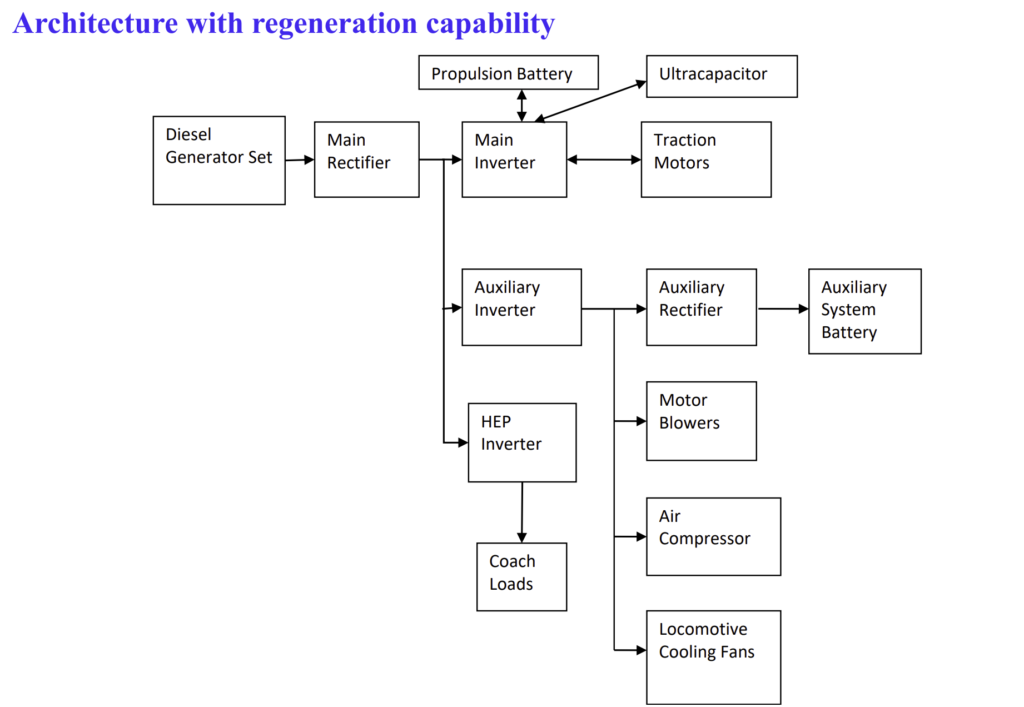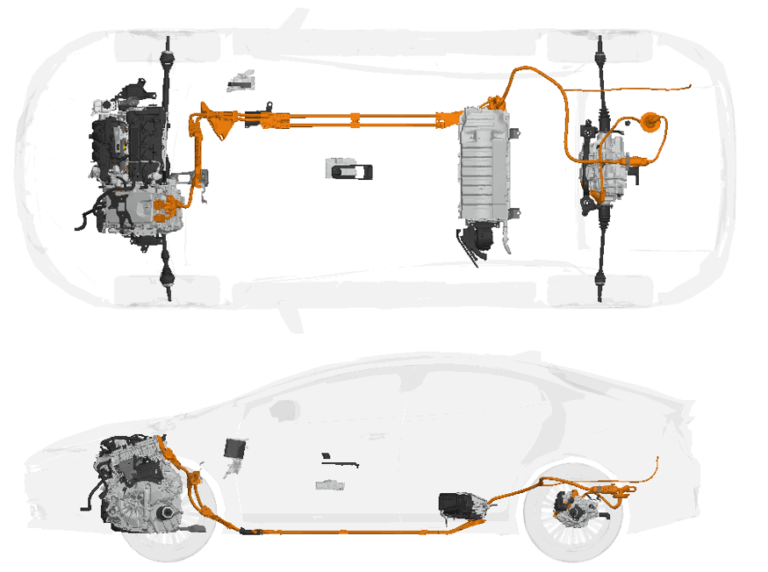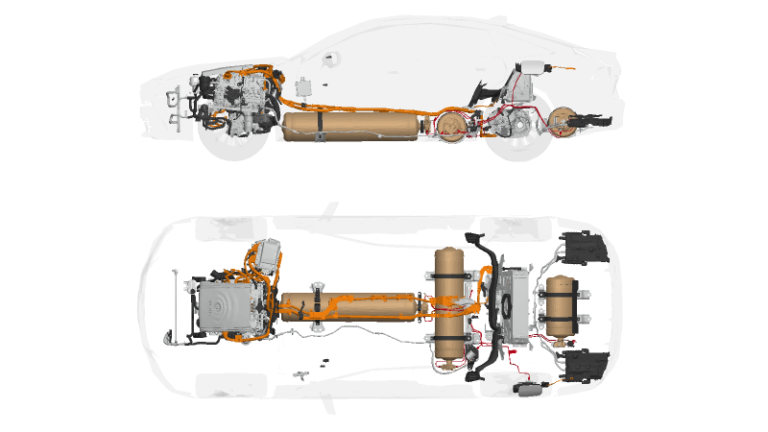The Green Revolution on Rails: The Rise of Hybrid Electrical Systems in Train Design
Have you heard about the green revolution happening on Rails? Trains are getting a major makeover with the rise of hybrid electrical systems in their design. It’s an exciting development that’s making train travel more sustainable and eco-friendly. In this article, we’ll dive into what exactly hybrid electrical systems are, how they work in trains, their advantages, and what the future holds for this innovative technology. So hop on board, and let’s explore the exciting world of hybrid electrical systems in trains!

What is the brief history of locomotives?
Locomotives, also known as trains or railway engines, have a rich history that dates back more than 200 years, starting with the steam locomotive around the early 1800s. The first steam-powered locomotive was invented by George Stephenson in 1814, and the first practical steam locomotive for railway transportation was built in 1825. Steam locomotives dominated the railway industry for many decades, followed by diesel locomotives. Diesel locomotives began replacing steam-based ones starting about a decade before the mid-20th century. Their popularity comes from the fact that they are easier to maintain than steam locomotives and are more efficient. To start the diesel engine it is necessary to have some starting mechanism, which can be electric, hydraulic, or pneumatic – and in case it is electrical, a small starter battery will be needed.

The first purely electric locomotive was introduced in 1894 by Kálmán Kandó using 3 phase induction motor. The problem at the time was it needed the electrification of the railway track. Then there was the gas turbine-based locomotive, where a gas turbine engine was used to run an electric generator, and the electricity was used to drive a propulsion motor. The gas turbine engine provided the benefit of high specific power density. But the efficiency drops after a certain engine speed, hence becoming uneconomic in terms of fuel economy. Unlike a diesel engine whose efficiency becomes flatter at a higher speed.

Regardless of how the train is powered the power demand in these vehicles could be anywhere around 3000 to 6000 hp on average, depending on the application. There are some exceptions where the size could be even bigger.
What are Hybrid Electrical Systems in Trains?
You might be wondering, “What exactly are hybrid electrical systems in trains?” Well, in simple terms, hybrid electrical systems combine two or more sources of power to propel trains. Typically, these systems integrate an electric power source, such as a battery or fuel cell, with a traditional mechanical power source, such as a diesel or gas engine. This combination allows trains to operate with greater efficiency, reduced emissions, and improved performance compared to traditional fossil fuel-powered trains.
How does a diesel-electric system work?
Diesel engine-based locomotives are mostly used nowadays. A diesel-electric system used in locomotives involves a diesel engine that generates mechanical power, which is then converted into electrical power by a generator.
This electrical power is transmitted to traction motors that drive the locomotive’s wheels. The locomotive’s control system regulates the amount of power supplied to the traction motors, allowing for precise control of speed and power. Diesel-electric systems are popular in modern locomotives due to their flexibility, efficiency, and ability to provide reliable and powerful performance for railway transportation.
How Do Hybrid Electrical Systems Work in Trains?
Now that we know what hybrid electrical systems are, let’s take a closer look at how they work in trains. The basic principle is to use the electric/ battery power as a power source to provide power for propulsion, while the diesel engine provides mechanical power.
In a typical setup, the electric power source, which can be a battery or a fuel cell, provides power to an electric motor that drives the train’s wheels. The electric motor converts the electrical energy into mechanical energy, propelling the train forward. The mechanical power source, such as a diesel or gas engine, can kick in when the electric power source needs a boost, such as during high-demand situations like climbing steep inclines or accelerating quickly.

The use of hybrid electrical systems in trains offers several benefits. First, it reduces the dependency on fossil fuels and lowers emissions. Electric power sources produce little to no emissions, which can help combat air pollution and reduce CO2 gas emissions that contribute to climate change. Second, hybrid electrical systems allow for regenerative braking, where the electric motor acts as a generator during braking, converting excess energy back into the electric power source, thereby increasing energy efficiency. Third, the mechanical power source can serve as a backup, providing reliability and redundancy in case of power source failures.
What is regenerative braking in a diesel-electric engine?
Regenerative braking is a feature in some diesel-electric locomotives that allows the locomotive to recover energy during braking and store it for later use. When the locomotive applies brakes, the traction motors switch from acting as motors to generators, converting the kinetic energy of the moving train into electrical energy.

For capturing regenerative energy, it is necessary to have some storage battery, ultracapacitor, or a combination of both, or even a flywheel storage unit, which can be used during regeneration. Regenerative braking helps to save fuel and reduce environmental impact by utilizing the energy generated during braking instead of dissipating it as heat. The regeneration can help improve fuel economy and is of more importance for short-haul trains and may not be as important for long-haul trains.
Advantages of Hybrid Diesel-Electric Systems in Trains
So, what are the advantages of using hybrid electrical systems in trains? Let’s take a closer look:
- Reduced packaging space: The main advantage of why the diesel-electric system is used is if the propulsion was purely mechanical, then a pretty big-sized transmission system with a gearbox, etc. would be needed to create the needed torque in the wheels.
- Enhanced Performance: Hybrid electrical systems can provide improved performance compared to traditional trains, particularly in short-haul trains. Where speed fluctuation will be encountered, a diesel engine with a finite (and a large) number of gears will be needed to be operated at different speeds other than the optimum speed at which the efficiency is highest.
- By using a diesel-electric system, both of these issues can be removed.
- A diesel engine can be run at the most optimal speed, and a generator is able to run to
produce electricity, which can be used to run a traction motor to drive the
wheels. - With power electronics, this system is rather easy to realize, using reliable and efficient traction motors, e.g. induction motor, synchronous motor – either a permanent magnet or field excited.
- Environmental Sustainability: Hybrid electrical systems in trains significantly reduce emissions compared to traditional fossil fuel-powered trains. Electric power sources produce little to no emissions, contributing to a greener and more sustainable mode of transportation.
- Improved Energy Efficiency: Hybrid electrical systems allow for regenerative braking, where excess energy generated during braking is fed back into the power source, increasing overall energy efficiency. This helps to reduce energy wastage and makes trains more energy-efficient.
- Reduced Operating Costs: While the initial cost of implementing hybrid electrical systems in trains may be higher, the long-term operating costs can be significantly reduced. Electric power sources generally require less maintenance compared to traditional mechanical power sources, resulting in lower maintenance costs over time.
- Increased Reliability: Hybrid electrical systems provide increased reliability and redundancy. The mechanical power source can serve as a backup in case of electric power source failures, ensuring uninterrupted train operations and improved reliability.
Challenges and Future of Hybrid Electrical Systems in Trains
While hybrid electrical systems offer numerous advantages, there are also challenges to overcome. One of the significant challenges is the high upfront cost of implementing such systems. The development, integration, and maintenance of electric power sources can be expensive, which may pose financial challenges for some rail operators. However, as technology advances and adoption increases, the costs are expected to reduce over time.
Another challenge is the limited availability of charging infrastructure for electric power sources, such as charging stations for batteries or refueling stations for fuel cells. This can limit the operational range and flexibility of trains powered by hybrid electrical systems. However, efforts are being made to expand charging infrastructure and develop innovative solutions to address this challenge.
The future of hybrid electrical systems in trains looks promising. With advancements in battery technology, fuel cell technology, and charging infrastructure, hybrid electrical systems are expected to become more efficient, affordable, and widely adopted in the rail industry. This will further contribute to the green revolution on rails, making train travel more sustainable and environmentally friendly.
Conclusion: A Greener Future for Trains
In conclusion, the rise of hybrid electrical systems in train design is driving the green revolution on rails. These systems offer numerous advantages, including environmental sustainability, improved energy efficiency, enhanced performance, reduced operating costs, increased reliability, and positive public perception. However, there are also challenges to overcome, such as high upfront costs and limited charging infrastructure. Nevertheless, with technological advancements and increasing adoption, hybrid electrical systems are expected to play a significant role in shaping the future of trains toward a greener and more sustainable mode of transportation.
So, guys, what do you think about the green revolution happening on Rails? Do you think hybrid electrical systems in trains are a game-changer? Let me know your thoughts in the comments below! Let’s keep the conversation going and stay excited about the future of trains with greener and more sustainable technologies.





